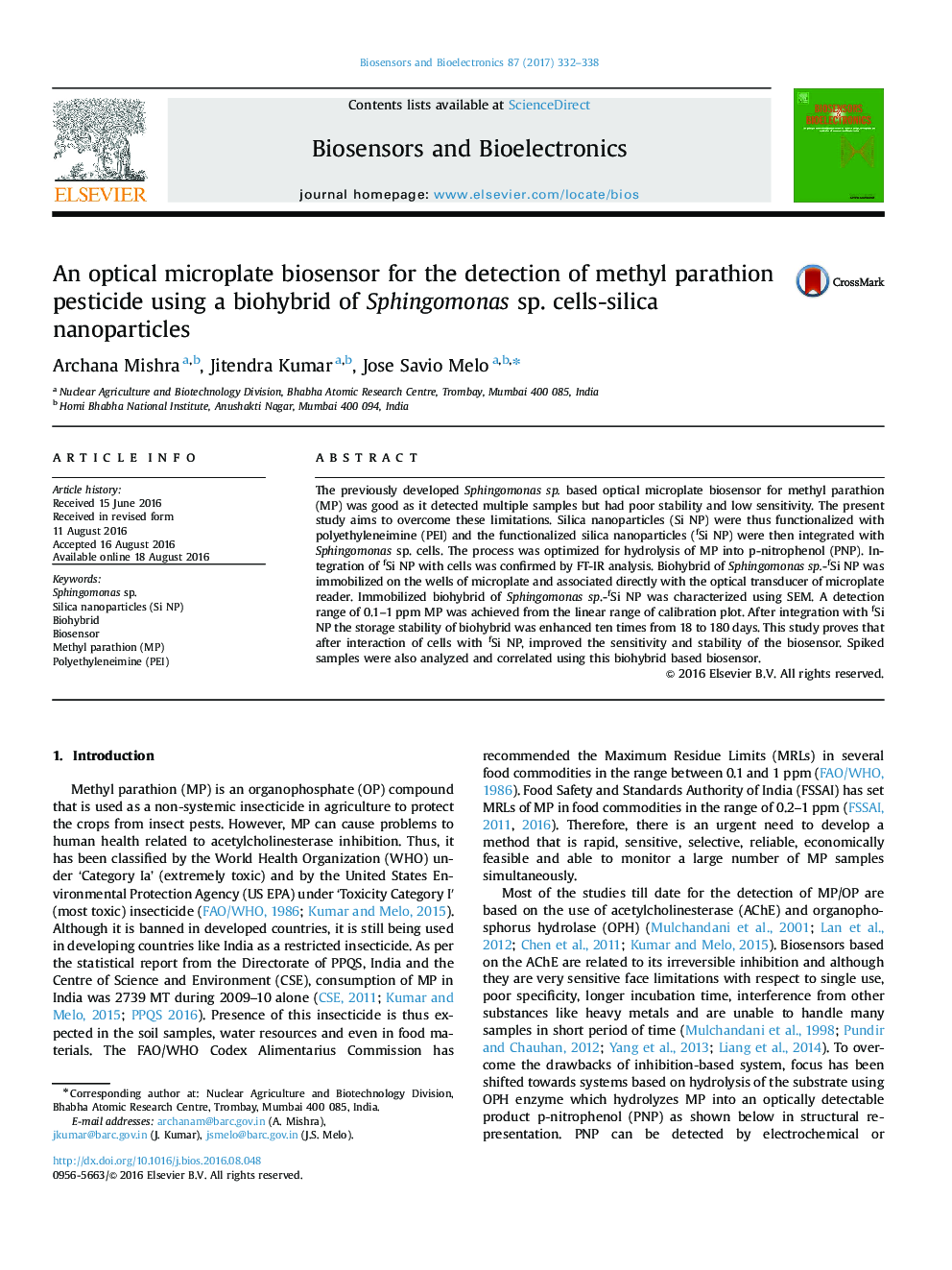| Article ID | Journal | Published Year | Pages | File Type |
|---|---|---|---|---|
| 7230129 | Biosensors and Bioelectronics | 2017 | 7 Pages |
Abstract
The previously developed Sphingomonas sp. based optical microplate biosensor for methyl parathion (MP) was good as it detected multiple samples but had poor stability and low sensitivity. The present study aims to overcome these limitations. Silica nanoparticles (Si NP) were thus functionalized with polyethyleneimine (PEI) and the functionalized silica nanoparticles (fSi NP) were then integrated with Sphingomonas sp. cells. The process was optimized for hydrolysis of MP into p-nitrophenol (PNP). Integration of fSi NP with cells was confirmed by FT-IR analysis. Biohybrid of Sphingomonas sp.-fSi NP was immobilized on the wells of microplate and associated directly with the optical transducer of microplate reader. Immobilized biohybrid of Sphingomonas sp.-fSi NP was characterized using SEM. A detection range of 0.1-1Â ppm MP was achieved from the linear range of calibration plot. After integration with fSi NP the storage stability of biohybrid was enhanced ten times from 18 to 180 days. This study proves that after interaction of cells with fSi NP, improved the sensitivity and stability of the biosensor. Spiked samples were also analyzed and correlated using this biohybrid based biosensor.
Related Topics
Physical Sciences and Engineering
Chemistry
Analytical Chemistry
Authors
Archana Mishra, Jitendra Kumar, Jose Savio Melo,
